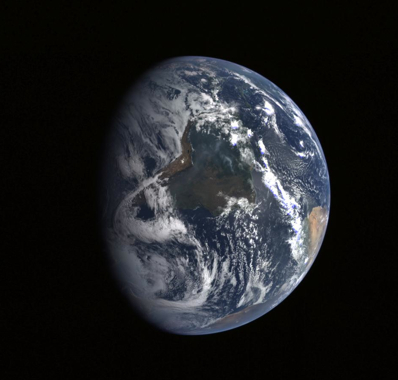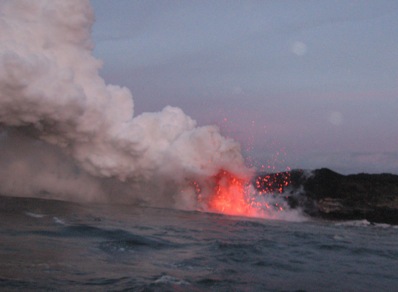



|

|

Stuff of life may have been cooked up on young Earth
KEITH COOPER
ASTRONOMY NOW
Posted: September 17, 2009


Compounds crucial to the evolution of organic molecules, which first existed between 4.5 and 3.8 billion years ago and that paved the way for life to eventually form on Earth, have been recreated in a laboratory for the first time in conditions matching those of the early Earth. This breakthrough result is being presented today at the European Planetary Science Congress (EPSC) in Potsdam, Germany by Dr Stefan Fox of the University of Hohenheim in Stuttgart.
 Earth developed the capability to form life early in its history. Image: NASA/JHUAPL/Carnegie Institution of Washington.
Earth developed the capability to form life early in its history. Image: NASA/JHUAPL/Carnegie Institution of Washington.
In 1951 Stanley Miller and Harold C Urey successfully recreated amino acids in a simulation of the conditions of early Earth, with a hydrogen-rich atmosphere laced with the likes of methane and ammonia. When electrical currents courtesy of lightning flashes interacted with this atmospheric mix, they provided the spark for various molecules to form amino acids, the building blocks of proteins that in turn are the components of the constituents of DNA. Carl Sagan followed up on this with his own experiments in the 1960s, introducing ultraviolet radiation to the mix and creating various sugars and nucleic acids too. Since then, more experiments of this nature have been conducted, and further discoveries have shown that even comets could have also supplanted amino acids on Earth. Fox’s results are the next step to discovering the origin of life on Earth.
Fox baked a ‘salt crust’ of potassium, calcium, sodium and magnesium chlorides that contained the amino acid alanine. “After heating we found that a compound had formed with calcium salt chemically bonded to the amino acid,” says Fox.
 When lava flows into the sea, it causes the seawater to evaporate and leave behind salt crusts. Hence amino acids, proteins, and more complex compounds such as pyrroles formed in and around volcanoes.
When lava flows into the sea, it causes the seawater to evaporate and leave behind salt crusts. Hence amino acids, proteins, and more complex compounds such as pyrroles formed in and around volcanoes.
The chemical bond that forms is strong enough to prevent the compound from sublimating back into the atmosphere when introduced to high temperatures, such as those found in volcanoes. Without this chemical bond provided by the amino acid, more complex compounds called pyrroles would not be able to form. Pyrroles are organic compounds that are found in chlorophyll in plants and in haeme (the oxygen carrying part of haemoglobin).
“Our aim is to identify types of small molecules that might have participated in a hypothetical next step of chemical evolution – the formation of energy driven networks of molecules that were the precursors to the first primitive electron-transfer and light-harvesting molecules,” says Fox. “Our recent results show that amino acids, peptides and pyrroles could all have been present at this stage on Earth’s evolution and would be good candidates for components of these networks.”
|

|

|

|
|



